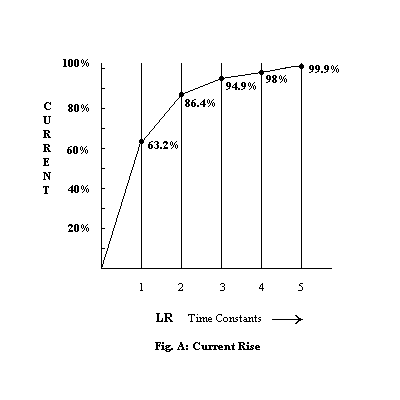Chart of LR Time Constants for Series Charge Rate
See brief example below


Above is the charge rate of a resistor and an inductor in series. If we have a resistor (R) value
of 1,000 Ohms (1K Ohm, see
NOTE) and an inductor (L) value of 100 m H (100 milliHenries, or 0.100 Henries),
see NOTE), for 1 time constant, we
simply divide the Inductor value, in Henries, by the resistance value. It takes 5 time constants for the circuit to rise to the
the maximum current value of the DC current of the circuit (100%) or 5 t.
NOTE: Numeration Lesson Sheet
Example:
t = 1 time constant in Seconds
L = 100 mH (0.100 Henries)
R = 1.0 K Ohm (1,000 Ohms)
Then: t = L/R or substituting the values of L and R, we get t = (0.100H)/(1,000 Ohms)
1t =0.0001 Seconds (1/10,000th of a Second)
Therefore, 5t = 5*(0.0001 Seconds) or 5t = 0.0005 Seconds ( 5/10,000ths of a Second)
That's pretty quick !!
Please look at the chart above to see the curve. Does it make sense now?